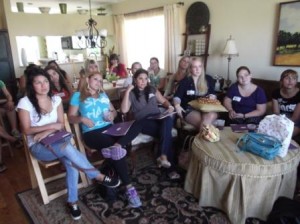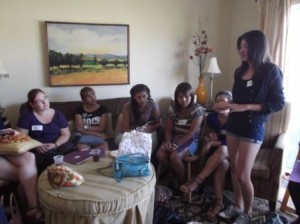 PLEASE DO NOT DRIVE DURING A SNOW STORM!
PLEASE DO NOT DRIVE DURING A SNOW STORM!
This is a major snow storm and no au pair should be driving! Please be very careful, the snow is supposed to stop Tuesday afternoon. The roads will get cleared, but it may take some time. The kids will be off of school tomorrow, some schools will be sending the kids home early today. Be prepared and enjoy the snow days at home!
STAY HOME, YOU CAN GO OUT WHEN THE STREETS ARE PLOWED, BE SAFE!!
AAA recommends the following winter driving tips:
- Avoid driving while you’re tired. Get the proper amount of rest!!
- Never warm up a vehicle in an enclosed area, such as a garage.
- Make certain your tires are properly inflated.
- Keep your gas tank at least half full to avoid gas line freeze-up.
- If possible, avoid using your parking brake in cold, rainy and snowy weather.
- Do not use cruise control when driving on any slippery surface (wet, ice, sand).
- Always look and steer where you want to go.
- Use your seat belt every time you get into your vehicle.
- Watch weather reports and do NOT drive in bad weather is expected. If you must leave, let others know your route, destination and estimated time of arrival.
- If you become snow-bound, stay with your vehicle. It provides temporary shelter and makes it easier for rescuers to locate you. Don’t try to walk in a severe storm.
- Make sure the exhaust pipe isn’t clogged with snow, ice or mud. A blocked exhaust could cause deadly carbon monoxide gas to leak into the passenger compartment with the engine running.
Tips for driving in the snow:
- Accelerate and decelerate slowly. Applying the gas slowly to accelerate is the best method for regaining traction and avoiding skids. Don’t try to get moving in a hurry. And take time to slow down for a stoplight. Remember: It takes longer to slow down on icy roads.
- Drive slowly. Everything takes longer on snow-covered roads. Accelerating, stopping, turning – nothing happens as quickly as on dry pavement. Give yourself time to maneuver by driving slowly.
- The normal dry pavement following distance of three to four seconds should be increased to eight to ten seconds. This increased margin of safety will provide the longer distance needed if you have to stop.
- Know your brakes. Whether you have antilock brakes or not, the best way to stop is threshold breaking. Keep the heel of your foot on the floor and use the ball of your foot to apply firm, steady pressure on the brake pedal.
- Don’t power up hills. Applying extra gas on snow-covered roads just starts your wheels spinning. Try to get a little inertia going before you reach the hill and let that inertia carry you to the top. As you reach the crest of the hill, reduce your speed and proceed down hill as slowly as possible.
- Don’t stop going up a hill. There’s nothing worse than trying to get moving up a hill on an icy road. Get some inertia going on a flat roadway before you take on the hill.
- Stay home. If you really don’t have to go out, don’t. Even if you can drive well in the snow, not everyone else can. Don’t tempt fate: If you don’t have somewhere you have to be, watch the snow from indoors.
 Keep in your car for safety during the winter:
Keep in your car for safety during the winter:
- An ice scraper and brush
- Spray de-icer
- Cat litter – for getting out of a rut, for traction in the snow
- Collapsible show shovel
- Blanket
- Cell phone – know who to call in an emergency
- Flash light

 The Suffolk County cluster of Au Pair in America meeting in September was filled with au pairs and with important information. Cindy Garruba, Senior Community Counselor advised all host families to make sure their au pair attended this important meeting.
The Suffolk County cluster of Au Pair in America meeting in September was filled with au pairs and with important information. Cindy Garruba, Senior Community Counselor advised all host families to make sure their au pair attended this important meeting. Along with the valuable lessons learned, the au pairs also had a chance to talk about themselves. They each told the group their name, their country, when they arrived in the USA, where their host family lives in Suffolk County, how many and the ages of their host children. The group includes au pairs from Europe, Asia and South America. Everyone made new friends!
Along with the valuable lessons learned, the au pairs also had a chance to talk about themselves. They each told the group their name, their country, when they arrived in the USA, where their host family lives in Suffolk County, how many and the ages of their host children. The group includes au pairs from Europe, Asia and South America. Everyone made new friends!